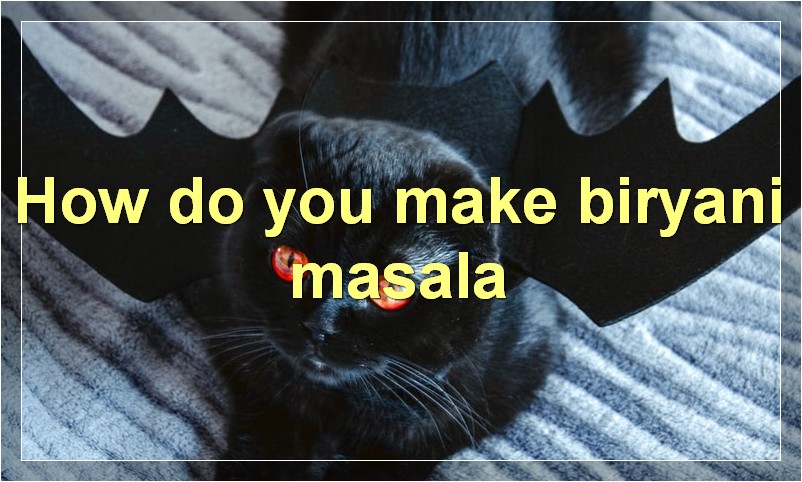Looking to add a little bit of color to your wardrobe? Why not try tie-dyeing your own clothes! It’s a fun and easy way to add some personality to your style. Plus, tie-dye is having a moment right now, so you’ll be right on trend. Here’s a quick guide on how to set your tie-dye after dyeing it.
What is the best way to set your tie-dye after dyeing?
Once you have completed the dyeing process, it is important to set your tie-dye in order to ensure that the colors are locked in and do not bleed. There are a few different methods that you can use to set your tie-dye, and the best method will depend on the type of fabric that you used.
If you used a natural fiber fabric, such as cotton, linen, or wool, then you will need to set your tie-dye using heat. The easiest way to do this is to toss your dyed item in the dryer on high heat for 30 minutes. You can also set your tie-dye using an iron. Simply place a piece of parchment paper over your tie-dye and iron on the hottest setting for 3-5 minutes.
If you used a synthetic fiber fabric, such as polyester, nylon, or acrylic, then you will need to set your tie-dye using cold water. The easiest way to do this is to soak your dyed item in a sink or tub filled with cold water for at least 30 minutes. You can also set your tie-dye using the washing machine. Simply wash your dyed item on the delicate cycle in cold water.
No matter what method you use to set your tie-dye, it is important to rinse it afterwards in order to remove any excess dye. Once you have rinsed your tie-dye, you can then wash it according to the care instructions for the fabric.
What are some tips for setting your tie-dye?

Tie-dye is a fun and easy way to add some color to your wardrobe. Here are a few tips to help you get the best results:
1. Choose the right fabric. Tie-dye works best on natural fibers such as cotton, linen, and silk. Synthetic fabrics such as polyester and nylon will not absorb the dye as well and can result in uneven or faded colors.
2. Pre-wash your fabric. This will help remove any sizing or finishes that could prevent the dye from penetrating the fabric evenly.
3. Set up your work area. Cover your work surface with plastic or a drop cloth to protect it from stains. Fill a bucket or sink with warm water and add the recommended amount of tie-dye according to the package instructions.
4. Fold or twist your fabric. This will create different patterns and designs on your fabric. Some popular folding techniques include accordion folds, spiral folds, and stripes.
5. Apply the dye. Using a squeeze bottle or sponge, apply the dye to the fabric. Be sure to wear gloves to avoid staining your hands.
6. Let the dye set. Once you have applied the dye, wrap the fabric in plastic wrap or place it in a zip-top bag. Let it sit for at least 6 hours, or overnight, to allow the dye to set properly.
7. Rinse and wash your fabric. Once the dye has set, rinse the fabric in cold water until the water runs clear. Then wash it in your washing machine on the gentle cycle with warm water and mild detergent.
How do you fix tie-dye that has bled?
The great thing about tie-dye is that it can be as vibrant and colorful as you want it to be. But sometimes, those bright colors can bleed together and create a big mess. If you’ve ever had tie-dye that has bled, then you know how frustrating it can be. But don’t worry, there is a way to fix it!
First, start by rinsing the fabric in cold water. This will help to set the dye and prevent it from bleeding any further. Next, mix up a solution of one part vinegar and two parts water. Vinegar is a natural fabric brightener and will help to restore the colors of your tie-dye.
Soak the fabric in the vinegar solution for about 30 minutes, then rinse it out with cold water. Once the fabric is rinsed, you can either wash it in your washing machine on the delicate cycle or hand wash it. Be sure to use a mild detergent and avoid using any fabric softeners, as these can strip away the color of your tie-dye.
After washing, hang your tie-dye up to dry in the sun. The sunlight will help to further set the colors and prevent them from bleeding. And that’s it! By following these simple steps, you can easily fix any tie-dye that has bled.
My tie-dye bled, what can I do?
Tie-dye is a fun and easy way to add some color to your wardrobe. But what do you do when your tie-dye bled? Follow these simple steps and you’ll have your favorite shirt back in no time!
First, start by filling a sink or bucket with cool water. Add a cup of white vinegar and stir gently. Soak your shirt in the mixture for 30 minutes.
Next, rinse your shirt in cool water until the water runs clear. Gently squeeze out excess water and lay your shirt flat to dry.
If the bleeding is severe, you may need to repeat these steps. Once your shirt is dry, enjoy your newly dyed creation!
Help! My tie-dye won’t set!
Tie-dye is a fantastic way to add some color to your wardrobe, but it can be frustrating when your design doesn’t turn out the way you wanted it to. If you’re having trouble getting your tie-dye to set, there are a few things you can try.
First, make sure you’re using the right type of fabric. Tie-dye works best on natural fibers like cotton, linen, and wool. Synthetic fabrics like polyester won’t absorb the dye as well, so your design will be less vibrant.
Next, check the instructions that came with your dye. Some dyes require you to pre-soak your fabric in salt water before you start tie-dyeing. This step helps the dye bond to the fabric so it won’t wash out as easily.
If you’re still having trouble, try using a hotter water setting on your washing machine. The heat will help set the dye into the fabric. Just be sure to wash your tie-dye separately from the rest of your laundry to avoid staining other clothes.
With a little patience, you can get beautiful results from tie-dyeing. Just remember to take your time and follow the instructions carefully. With a little practice, you’ll be an expert in no time!
What is the best fabric for tie-dye?

Tie-dye is a fabric printing technique in which fabric is dyed using dyes that are applied to the fabric in specific patterns. The most common fabrics used for tie-dye are cotton and silk. However, any natural fiber fabric can be used for tie-dye, including linen, wool, and even leather.
The best fabric for tie-dye is one that is made of natural fibers and that is pre-washed. This will help to ensure that the fabric absorbs the dye evenly and that the colors do not bleed. It is also important to choose a fabric that is not too thick or too thin. Thin fabrics will absorb the dye more quickly and may result in colors that are not as vivid. Thick fabrics will take longer to absorb the dye and may be more difficult to work with.
When selecting a fabric for tie-dye, it is also important to consider the type of project you are working on. If you are creating a garment, you will want to choose a fabric that is comfortable to wear and that dyes well. If you are creating a home decor item, you may have more freedom in your choice of fabric.
Once you have selected the perfect fabric for your tie-dye project, it is time to get started! Follow the instructions below to create beautiful, one-of-a-kind designs.
1. Choose your design. There are many different tie-dye patterns that you can create. You can find instructions for some of the most popular designs online or in craft books.
2. Prepare your workspace. Cover your work surface with plastic or old newspapers to protect it from stains. Fill several containers with water and add the appropriate amount of salt, soda ash, or urea ( depending on the dye you are using) according to the package directions.
3. Set up your dye station. Place your chosen fabric on a flat surface such as a table or the floor. If you are working with multiple colors, set up one station for each color of dye.
4. Apply the dye. Using a squirt bottle, sponge brush, or other applicator, apply the dye to the fabric according to your chosen design. Be sure to wear gloves to avoid staining your hands.
5. Let the dye set. Once you have applied all of the dye, cover the fabric with plastic wrap or place it in a zip-top bag and let it sit for at least 6 hours or overnight to allow the dye to set.
6. Rinse the fabric. After the dye has set, rinse the fabric in cold water until the water runs clear. Wash the fabric in warm water with mild detergent and dry it according to the manufacturer’s instructions.
How do you make tie-dye?
Tie-dye is a method of dyeing fabric in which the fabric is tied tightly in certain places before being dipped in dye. This creates patterns on the fabric that are usually quite bold and vibrant. Tie-dye is a very popular technique, especially for making shirts and other clothing items.
There are many different ways to tie-dye fabric, but all of them involve using some kind of resistance to prevent the dye from penetrating the entire piece of fabric. The most common way to do this is to tie the fabric into knots, but you can also use rubber bands, string, or anything else that will create a barrier.
Once the fabric is tied, it is then dipped into a vat of dye. The longer it stays in the dye, the deeper the color will be. After the fabric has been dyed, it is then rinsed in water to remove any excess dye.
The final step is to untie the fabric and allow it to dry. Once it is dry, you will have a beautiful, one-of-a-kind piece of tie-dyed fabric!
What are some good tie-dye designs?
Tie-dye is a centuries-old art form that has seen a resurgence in popularity in recent years. While there are many different ways to tie-dye fabric, the most common method is to knot or twist sections of the fabric and then soak it in a dye bath. The dye will be absorbed more deeply in the areas where the fabric is tied, resulting in a beautiful, multi-colored design.
There are endless possibilities when it comes to tie-dye designs, so it’s easy to get creative and come up with your own unique patterns. If you’re looking for some inspiration, here are a few good tie-dye designs to try:
1. Rainbow Spiral: This classic tie-dye design is created by folding the fabric into a spiral and then soaking it in several different colors of dye. As the fabric unrolls, you’ll be left with a beautiful rainbow spiral pattern.
2. Sunburst: This design is made by folding the fabric into a circle and then soaking it in two colors of dye, one light and one dark. As the fabric unfolds, you’ll be left with a sunburst effect.
3. Bull’s Eye: For this design, fold the fabric into a square and then soak it in three colors of dye, one light, one medium, and one dark. As the fabric unfolds, you’ll be left with a bull’s eye pattern.
4. Hearts: This design is created by folding the fabric into a square and then soaking it in two colors of dye, one light and one dark. Cut the square in half diagonally to create two triangles, then cut each triangle in half again to create four smaller triangles. Soak each triangle in a different color of dye to create a heart pattern.
5. Peace Sign: This design is made by folding the fabric into a square and then soaking it in three colors of dye, one light, one medium, and one dark. Cut the square in half diagonally to create two triangles, then cut each triangle in half again to create four smaller triangles. Soak each triangle in a different color of dye to create a peace sign pattern.
How do you prevent tie-dye from bleeding?
When working with tie-dye, it is important to take measures to prevent the colors from bleeding. This can be done by using a fixative or by pre-treating the fabric.
A fixative is a substance that helps to set the dye in the fabric so that it does not bleed. There are many different types of fixatives available, and the best one to use will depend on the type of fabric you are working with. Fixatives can be applied before or after dyeing.
If you are pre-treating the fabric, you will want to do so before you start the tie-dye process. This will help to make sure that the colors do not bleed when you are working with them. There are a few different ways to pre-treat fabric, and the best method will again depend on the type of fabric you are using.
Once you have chosen a fixative or pre-treatment method, you will want to follow the instructions carefully to ensure that it is applied correctly. By taking these precautions, you can help to ensure that your tie-dye project turns out exactly as planned.
Is tie-dye permanent?
The history of tie-dyeing goes back thousands of years to various cultures around the world. In recent years, it has experienced a resurgence in popularity, particularly among the hippie and counterculture groups of the 1960s. Today, tie-dye is still used as a form of artistic expression and as a fashion statement.
But what exactly is tie-dye? And is it permanent?
Tie-dye is a fabric dyeing technique in which fabric is bound tightly and dyed with one or more colors. The result is a design with vivid colors that are often swirls or patterns.
Tie-dyeing is a very old art form. In fact, some historians believe that the first tie-dyed fabrics were created in ancient China. Tie-dyeing later spread to Japan and other parts of Asia. It is also believed thattie-dyeing was practiced by the ancient Egyptians.
In the West, tie-dyeing became popular in the early 20th century among bohemian artists and celebrities. It wasn’t until the 1960s that tie-dye really took off, becoming associated with the hippie movement.
So, what about permanence? Are tie-dyed fabrics permanent?
The short answer is yes, tie-dye is permanent. However, there are some things to keep in mind. First, the type of fabric you’re using will affect how permanent the dye is. Natural fibers like cotton and linen will hold dye better than synthetic fibers like polyester and acrylic.
Second, the quality of the dye also matters. Low-quality dyes may fade over time or bleed when washed. High-quality dyes, on the other hand, will be more colorfast and durable.
Finally, how you care for your tie-dyed garment will also affect its longevity. Always follow the care instructions on the label, and avoid washing your tie-dyed clothing with other items that could bleed (like red socks).
So there you have it! Tie-dye is a fun and creative way to express yourself, and it’s also pretty permanent. Just be sure to use high-quality dyes and follow the care instructions on your garments.




